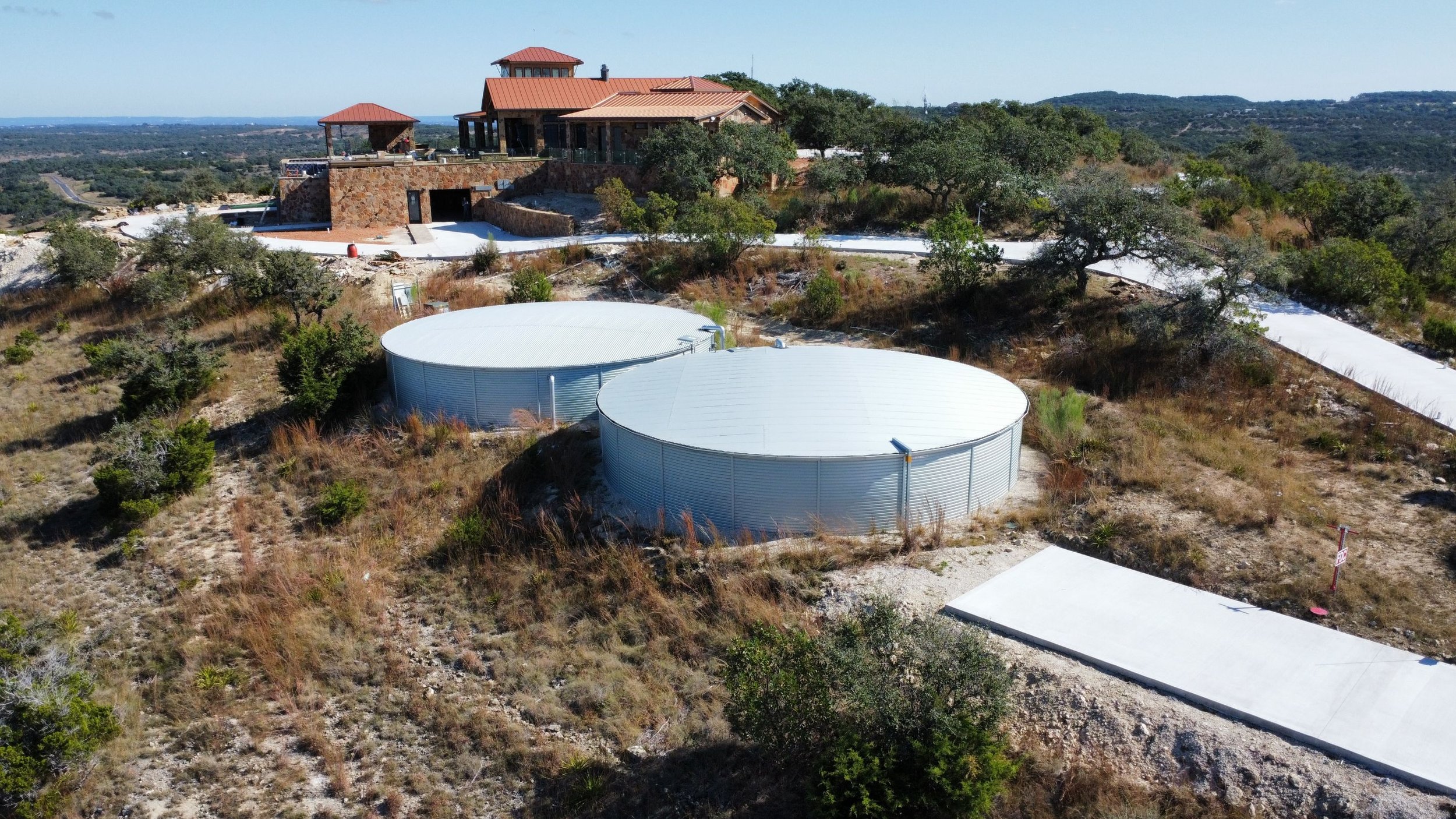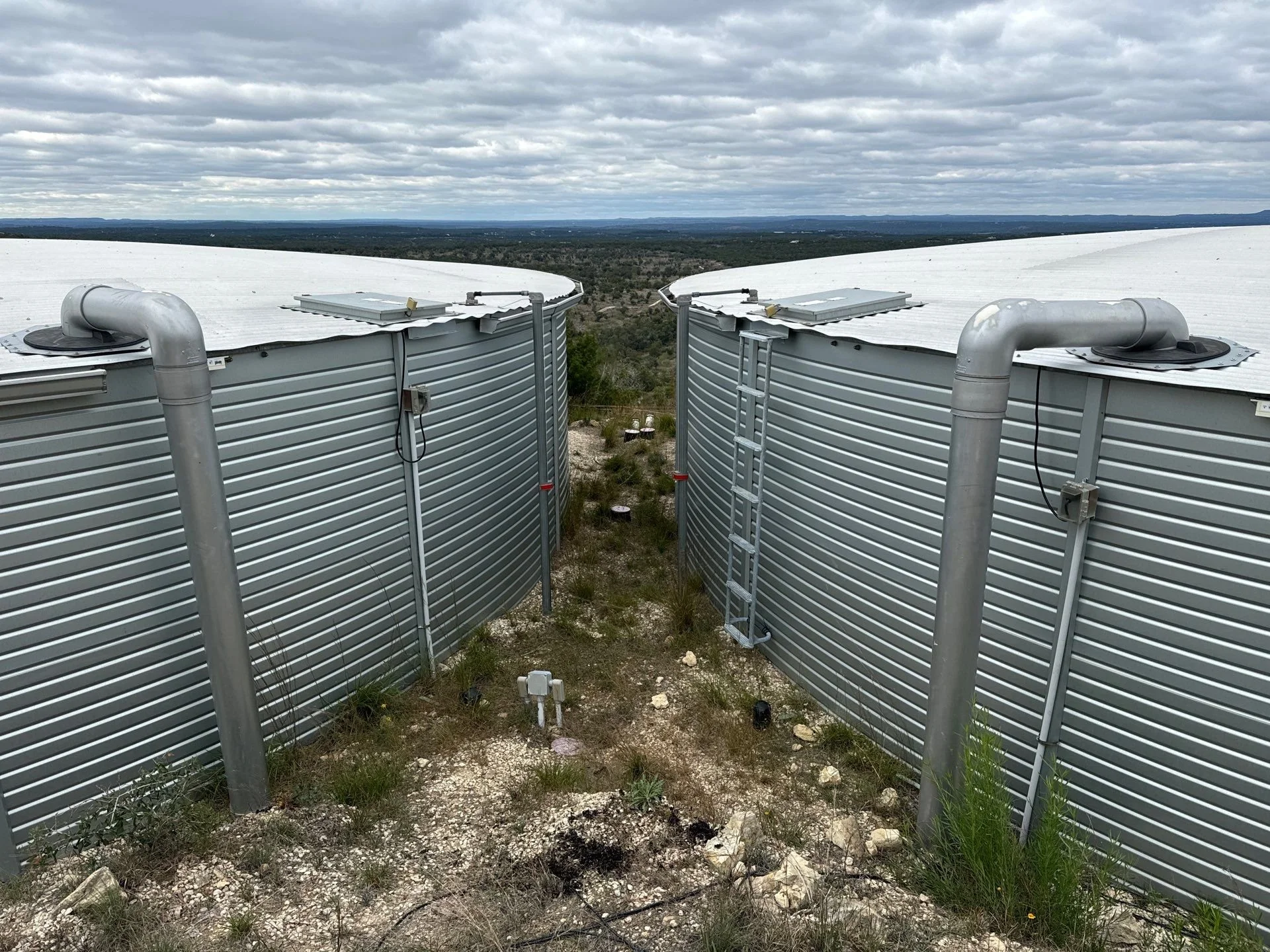
Providing rainwater harvesting and water storage solutions.
Achieve peace of mind by having a secure water supply for your home and family.
Cqure Water has been installing the highest quality rainwater harvesting systems since 2013.
Cqure Water, (pronounced “Secure Water""), began as Harvested Rain Solutions in 2013, when the founder, Ron Van Sickle, discovered the well at his Central Texas residence was running low. An engineer by trade, he applied his practice to design a cost-effective rainwater collection system for homes and ranches in Central Texas. Ten years later, Cqure Water has installed hundreds of collection systems and storage tanks, providing a reliable and delicious water source.
Rainwater Harvesting
Collecting rainwater from your roof into an above-ground storage tank constructed onsite.
Well Water Storage
Storing groundwater from your well to better anticipate water usage and meet your needs.
Maintenance and Monitoring
Offering system maintenance and monitoring options for your water storage system. Additional services coming soon.
Our
Projects
Cqure Water in the News
Central Texas Has a Water Shortage
Are you building your dream home in Central Texas? If you are thinking about digging a well for your water source, you may want to reconsider:
Many existing wells are no longer fully functioning due to a lack of groundwater availability.
A well with low water lacks sufficient pressure to provide water to your home.
In some situations, you may have to drill multiple times before hitting water, further exacerbating costs
This summer’s drought and excessively high temperatures are only making the situation worse.
Cqure Water can design and install a rainwater harvesting system for a price similar to drilling a well. With minimal upkeep and water quality that surpasses any well or public water system, you’ll be guaranteeing a safe, reliable water source for your property. Learn more about adding a rainwater collection system to your new home.
Rainwater harvesting and water storage is the right solution
Achieve peace of mind in knowing you have a reliable water supply. Contact us today about installing a rainwater collection system and storage tank at your home or ranch.
What Our Clients Have to Say
Stay in touch
Feel free to subscribe to our newsletter to receive news and updates from us.

























